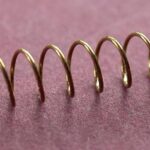Letting a Car Sit for a Month? 6 Things that Can Happen
Whether when we go on a trip or when we are simply trying a new commute route, sometimes we need to leave our car on its own for a long period. Here are some notions on how to do it properly
Is it Bad to Let a Car Sit for a Month?
It will be if you neglect the car. Cars are designed to stand still only for some hours at a time, like from when you come back home at night to when you use them again on the next day. It is possible to leave them unattended for longer, of course, but doing so requires taking extra precaution.
Basically, leaving the car sit for a long period triggers some forms of degradation. That will always happen; what we can do is understand them, identify the most likely ones, and prepare for them by protecting the car appropriately. This is what the following topics are going to show.
6 Bad Things that Can Happen if You Let a Car Sit for a Month
#1: Drained battery
Car batteries may suffer from the “parasitic drain” effect. If their ECU and/or electric wires are not properly grounded, the car will engage in a slight but constant discharge over time, up to draining the battery’s entire capacity.
Things may get worse if you live in a cold region: unused batteries are known for having fewer chances of recovering in case they spent all that time in low temperatures.
Also read: Why Does Car Battery Die when not Used? (The Facts)
#2: Degraded fuel
Gasoline, diesel, and ethanol have a shelf life, that is, a maximum period in which they can be used. Over time, fuels degrade and lose their chemical properties. Gasoline, for example, becomes darker and acquires a foul smell and a muddy appearance. Ethanol may even attract water molecules.
Driving with that fuel brings the same consequences as buying low-quality fuel as new: combustion will not occur correctly, so there may be a failure to start, rough sounds, loss of power and even the production of abnormal residue, which may block the internal ducts of the engine.
You are going to have yet another problem if the fuel attracted water through vapor: it can corrode both the tank and the fuel system over time.
#3: Weakened gaskets and seals
Both components exist as a consequence of the engine’s very nature. It uses many parts in relative movements, such as the pistons moving inside the combustion chamber, and they need a constant flow of lubricant fluid to avoid continuous collisions and destructive vibration.
Gaskets and seals last long if they work all the time, that is, if they are constantly submitted to the tensions for which they were created. If they sit still for a long time, their rubber material degrades, and they become brittle. They will not go back to their regular service quality when used again.
Trending Video: How to Easily Bring Back to Life any Old Car Battery and Save Tons of Money (click to watch)
#4: Weakened tires
The first and more obvious problem that happens with tires is to lose pressure until they become flat. However, leaving them unused for a long time affects them in another way as well because they have a rubber component – it suffers pretty much the same issues as the gaskets and seals of the previous topic.
Tire rubber becomes brittle and, as a result, develops cracks and holes throughout the geometry. Those openings allow more air outside the tire, which makes it flat even faster. Besides, if the car was left sitting on one of those flat spots, you will have to discard the tire; it is not possible to repair a tire with such a problem.
Also read: Does Car Radio use Gas? Well, Yes…
#5: Formation of rust
Rust is produced by a chemical reaction that takes place whenever iron is exposed to oxygen, so we can say that all cars are continuously rusting; industrial techniques can only slow this process as much as possible. However, it is known that simply driving the car regularly helps with that as well.
That chemical reaction happens more easily when oxygen and iron are stationary, so the more often you drive your car, the less time there will be for rust to happen at a higher rate. Therefore, letting your car sit actually boosts rust compared to driving it regularly.
Also read: 15 Cars that NEVER Rust (100% Galvanised)
#6: Pests may get inside
Last, but not least, there is always a possibility of mice or other animals getting inside the car. That is highly dependent on the car’s structure and sealing, but is easily noticeable because animals leave traces in the car. The only recommendable thing you can do about that is call pest control before solving any other issues in the car.
How to Store Your Car to Avoid These Things?
In any way that prevents or, at least, mitigates those effects. The appropriate procedure here is to understand the possible problems that may happen, then plan how can you prevent them within your possibilities to store the car.
The fuel issue, for example, can be solved by topping the tank and adding a fuel stabilizer. That will prevent the formation of rust on the tank while keeping fuel in good condition for longer. It is also desirable to get new fluids because they still serve a purpose even if the car is not running.
Some cars have anti-siphon mechanisms to prevent fuel theft. In that case, your only option is to leave the existing fuel there and, unfortunately, deal with the subsequent problems later.
The battery may be disconnected and stored inside. That would eliminate both the parasitic drain and the cold temperature issues.
When it comes to the tires, you could remove the wheels and leave the car on stilts to store the tires in a way as not to put them under mechanical stress. However, since that problem comes from the rubber’s behavior, you would only delay the problem a little.
Unfortunately, all the other problems are only solved with the replacement of the parts. Gaskets and seals are essential to the engine’s proper operation, so the best solution is to accept that you will probably have to replace them once you bring the car back to regular use.
Rust could be prevented by leaving the car at a dry place and with a plastic cover, but that is yet another situation of only delaying the problem; if you leave the car for too long, it will eventually develop some rust points for sure.
Also read: Why Does Car Battery Die when not Used? (The Facts)
How to Revive a Car That has Been Sitting for a Month?
Basically, reverting the precautions you took when you left it in the first place. Some items can simply be assembled back, while the best solution for others is to replace them altogether.
Following the same order of the previous topic, you should connect the battery again and assemble the wheels – the latter gives you an opportunity to rotate the tires, which is highly recommendable to make them wear in a uniform way. After that, make sure to measure the tire pressure; it is not recommendable to drive on flat tires, even for short distances.
When it comes to fuel, if you were able to drain the tank beforehand, simply adding new fuel should do the trick. If that is not the case, you will have to prepare to drive for a few miles on old fuel: add some fuel stabilizer to the tank to remove any retained water, expect a really bad smell from the exhaust pipe, and drive it a low pace because it will not work properly.
After that, you should try and start the car: if it fails, the most likely reason is a dead battery. If it does not hold any charge, it will be time to get a new one. It is also interesting to inspect the floor to check for puddles: they are likely the consequence of defective gaskets and seals.
While the car will be driveable at that point, it is highly recommendable to take it to a repair shop. Specialized professionals are the only people who will be able to tell if gaskets, seals, tires, or any other components effectively need replacement.






